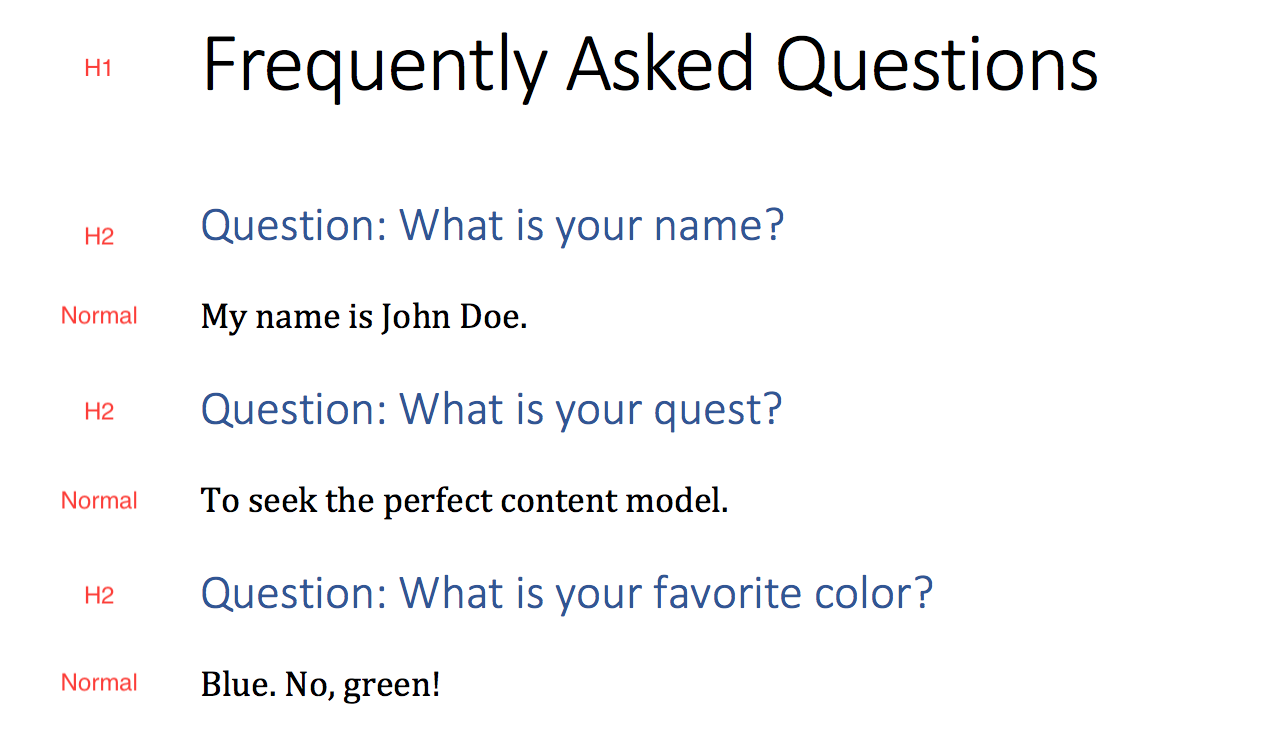Tag: structured authoring
Improving structured content for authors
Structured content authoring tools behave differently than traditional tools like Microsoft Word, which causes difficulty or reluctance among authors to use them. Structured content imposes strict rules around content purpose (semantics) and placement. These tools diverge from the traditional WYSIWYG (what you see is what you get) look and feel, which can be jarring for many authors. Fortunately, many structured authoring tools can be modified to feel less imposing.
Structured content and evolving needs
When we look at structured content, the first priorities are usually efficiency and cost savings. These savings are gained through intelligent content reuse and automated content delivery. The implicit promise of structured authoring is consistency; use structure, get consistent content. But this isn’t always the case, nor should it be.
Steps to structured content (podcast, part 2)
In episode 86 of The Content Strategy Experts podcast, Gretyl Kinsey and Bill Swallow continue their discussion about the steps to structure, how to move from unstructured content to structure, and what each level of maturity looks like.
“Step five is when you’re thinking even your structure is structured. You’re really thinking about how to take this to the highest possible level, how to get the most out of your automation, and how to make sure that the way you’re delivering your content is maximum efficiency.”
– Gretyl Kinsey
Steps to structured content (podcast, part 1)
In episode 85 of The Content Strategy Experts podcast, Gretyl Kinsey and Bill Swallow talk about the steps to structure, how to move from unstructured content to structure, and what each level of maturity looks like.
“It’s important to keep in mind when you move from step two to step three that your authoring tools may change. The writers might have gotten used to working with one set of tools in steps one and two. But as you move to structure, the tools that you’re using for unstructured content may not support the underlying framework for the structure that you’re moving forward with.”
– Bill Swallow
Content lifecycle challenges
“When you share content across the company in ways you haven’t before, everyone has to shift to a culture of collaboration.”
The challenge of digital transformation
Digital transformation touches on every aspect of business operations. At Scriptorium, our focus is on high-value content, so our definition of digital transformation is also content-centric:
“Digital transformation is the use of technology to enrich information delivery.”
“Enriched” information is usually divided into two major categories:
- Content delivery
- Context
Full transcript of Building a business case for structured authoring (podcast)
Bill Swallow: Welcome to the Content Strategy Experts podcast, brought to you by Scriptorium. Since 1997, Scriptorium has helped companies manage, structure, organize, and distribute content in an efficient way.
Building a business case for structured authoring (podcast)
In episode 49 of the Content Strategy Experts podcast, Bill Swallow of Scriptorium and Stephani Clark of Jorsek discuss the value of structured authoring and building a business case for it.
Learning to love nesting in structured content
Nested content is one of the biggest differences between structured and unstructured content.










